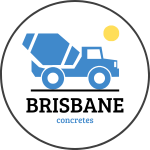Brisbane Driveway Resurfacing
Built Right, Built Strong — Concrete Experts Just a Quote Away!
Driveway Resurfacing
A worn, cracked, or stained driveway doesn’t just affect the way your property looks – it can also impact safety and functionality. Our Brisbane driveway resurfacing service provides a cost-effective way to breathe new life into your concrete without the need for a full replacement. Whether you want to repair damage, improve appearance, or upgrade to a decorative finish, resurfacing is a smart investment that delivers a fresh, durable surface.
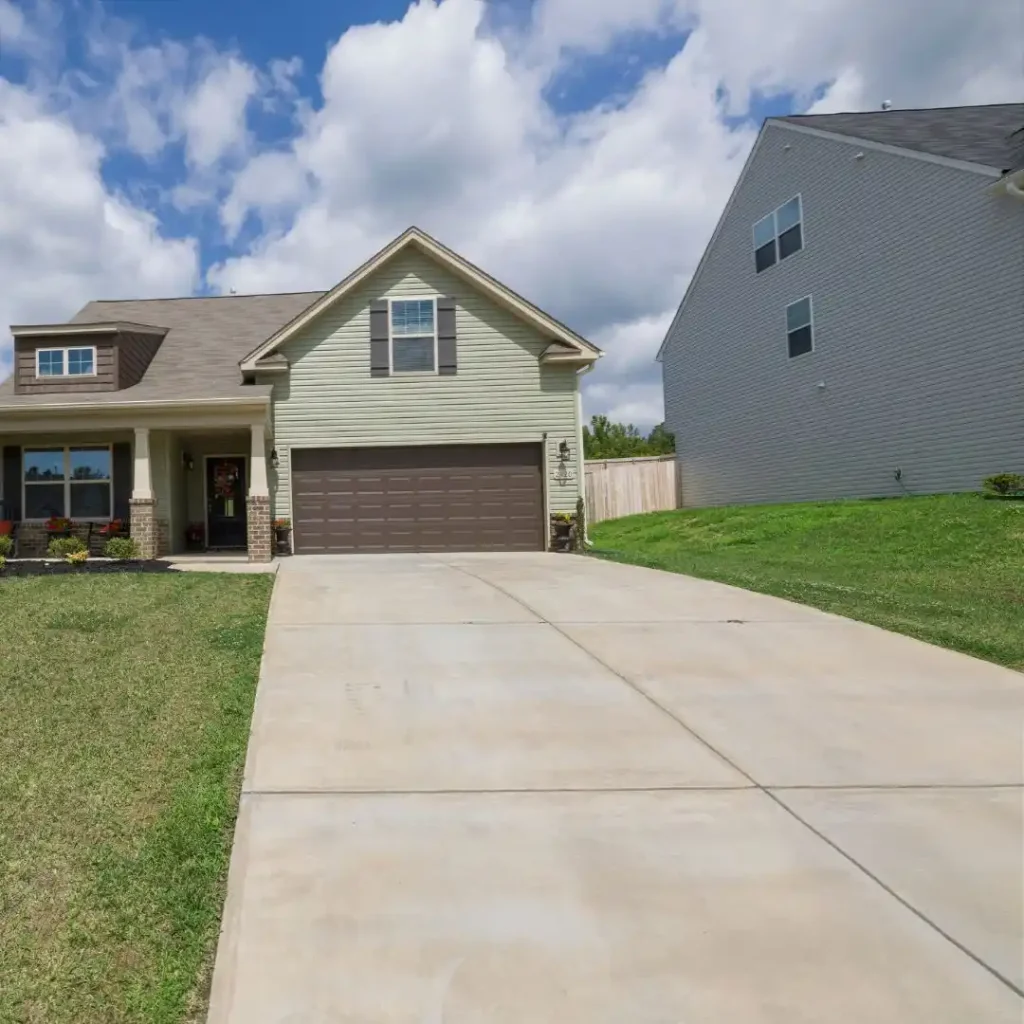
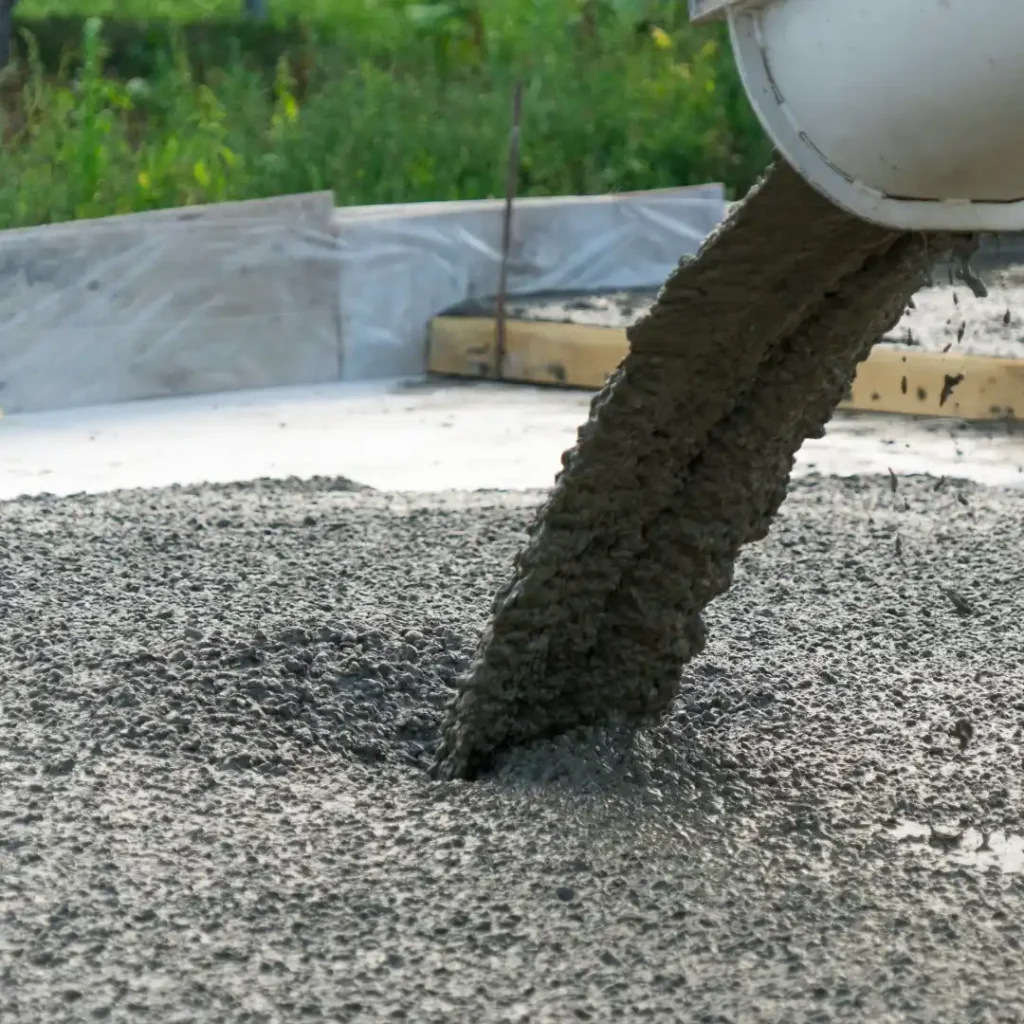
Why Choose Driveway Resurfacing in Brisbane?
Over time, Brisbane’s hot summers, heavy rain, and constant vehicle use can take their toll on concrete driveways. Resurfacing offers a practical solution that:
Repairs surface damage – Fix cracks, chips, and uneven patches.
Improves curb appeal – Modern finishes instantly refresh your property’s look.
Extends lifespan – Protects your driveway from further deterioration.
Saves money – A fraction of the cost of a full driveway replacement.
Allows customisation – Choose from exposed aggregate, stencil, stamped, or smooth finishes.
This process works on most concrete driveways, including plain concrete, decorative concrete, and older surfaces that need a new lease on life.
Popular Driveway Resurfacing Finishes in Brisbane
Resurfacing gives you the opportunity to update your driveway’s appearance while improving performance. Popular options include:
1. Stencil Concrete
Perfect for achieving stylish brick, tile, or paver patterns without the cost and upkeep of individual pieces.
2. Stamped Concrete
Replicates the texture of natural stone, slate, or wood for a high-end look that’s still easy to maintain.
3. Exposed Aggregate Resurfacing
Adds a textured, slip-resistant surface with decorative stones visible for a premium finish.
4. Smooth or Coloured Concrete
A clean, minimalist choice that works well for modern homes and contemporary landscapes.
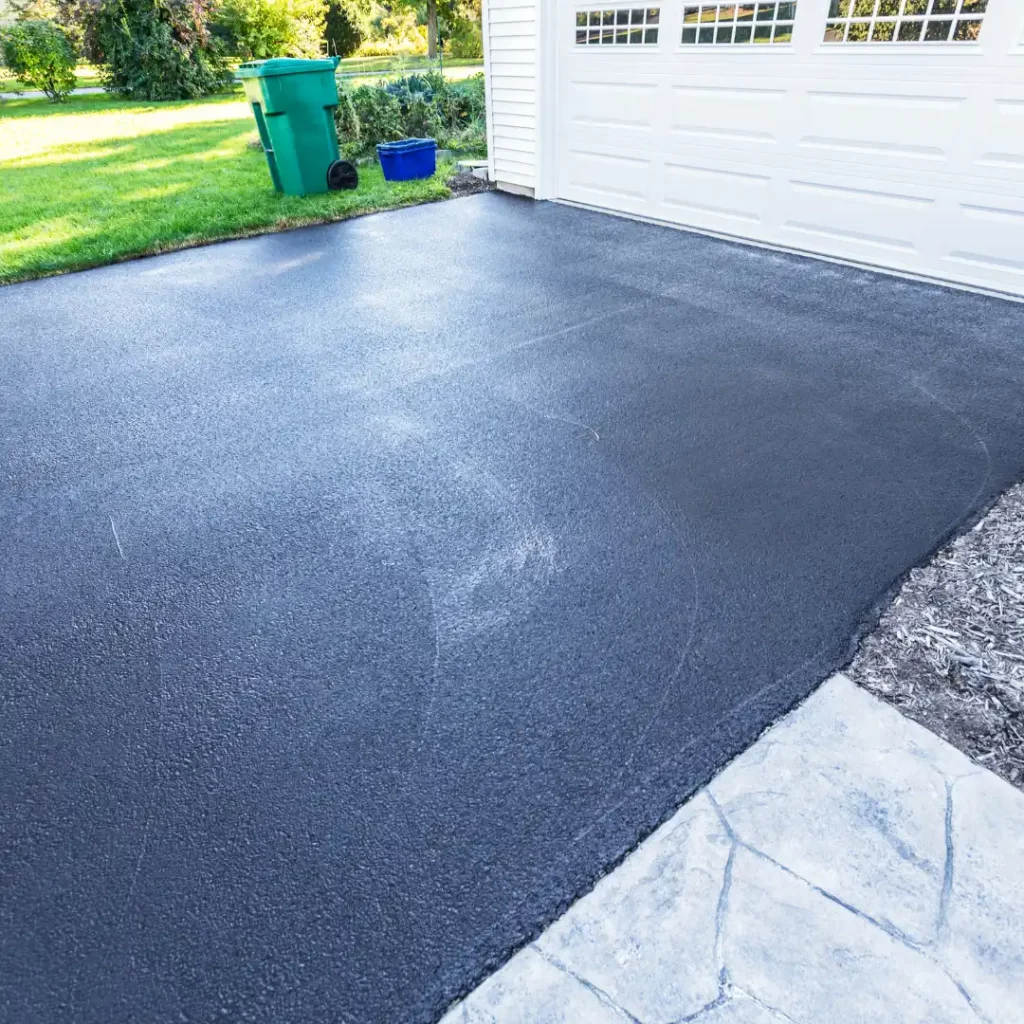
Request A Quote
Fill out the form and we’ll get back to you shortly!
Benefits of Concrete Driveway Resurfacing
Enhances Property Value – A fresh driveway makes a strong first impression.
Increases Safety – Reduces tripping hazards and improves vehicle traction.
Customisable Style – Match your driveway to your home’s exterior.
Low Maintenance – Sealed surfaces resist dirt, stains, and weeds.
Eco-Friendly Choice – Resurfacing reuses existing concrete instead of sending it to landfill.
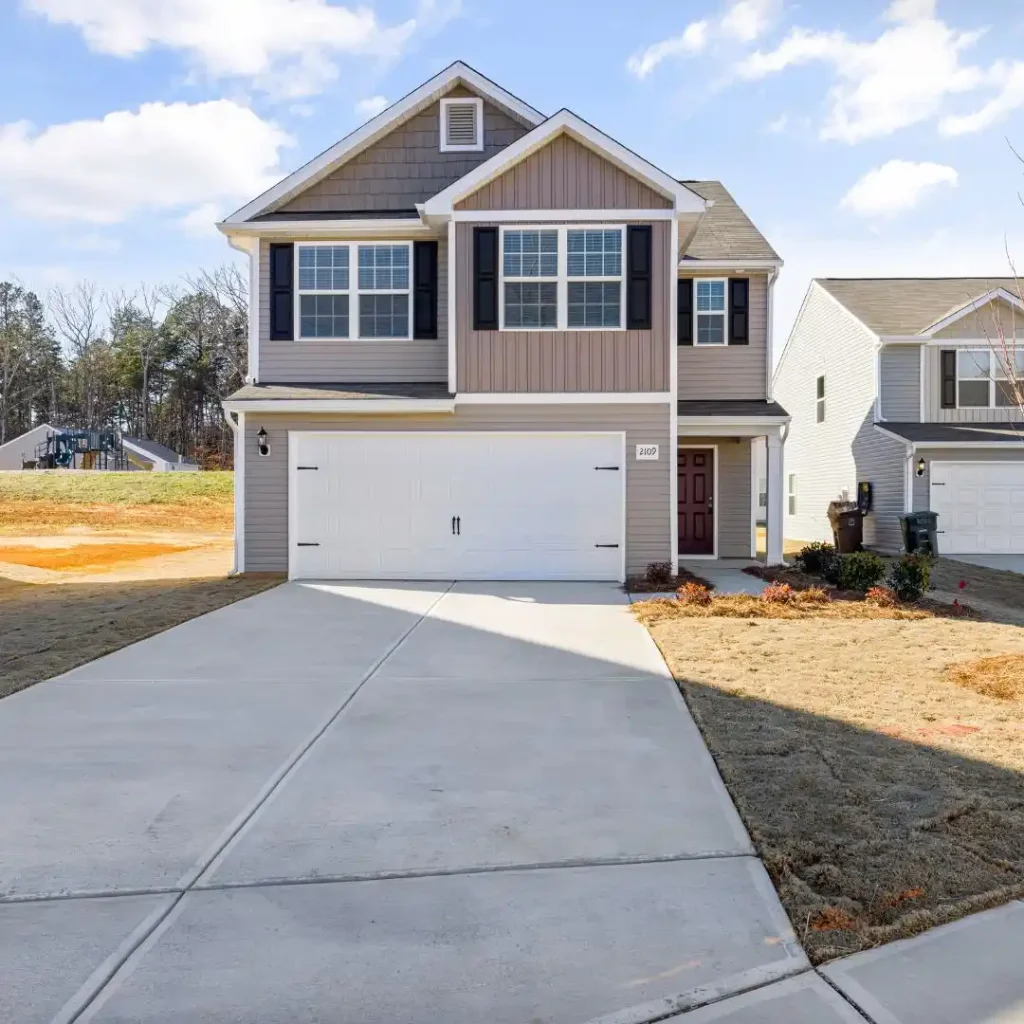
How Long Does Driveway Resurfacing Last?
With quality workmanship and proper maintenance, a resurfaced concrete driveway can last 10–15 years or more. Regular cleaning and resealing every few years will keep the surface looking new and performing well.
Cost of Driveway Resurfacing in Brisbane
The cost of concrete driveway resurfacing depends on:
Size of your driveway.
Condition of the existing concrete.
Chosen finish (basic overlay, decorative stencil, exposed aggregate, etc.).
Any required repairs before resurfacing.
In Brisbane, resurfacing prices are generally more affordable than complete driveway replacement, making it a cost-effective solution for homeowners and businesses wanting great results without the higher expense.
When to Consider Driveway Resurfacing Instead of Replacement
Resurfacing is ideal when your driveway has:
Surface cracks or minor pitting.
Fading colour or stained patches.
Uneven or worn texture.
Outdated style you want to modernise.
If the underlying concrete is severely damaged or structurally unsound, replacement may be a better option.
Sealing Your Resurfaced Driveway
Sealing is an essential part of the resurfacing process. It:
Protects against water damage and stains.
Preserves the colour and finish.
Adds extra slip resistance if needed.
Extends the life of your driveway.
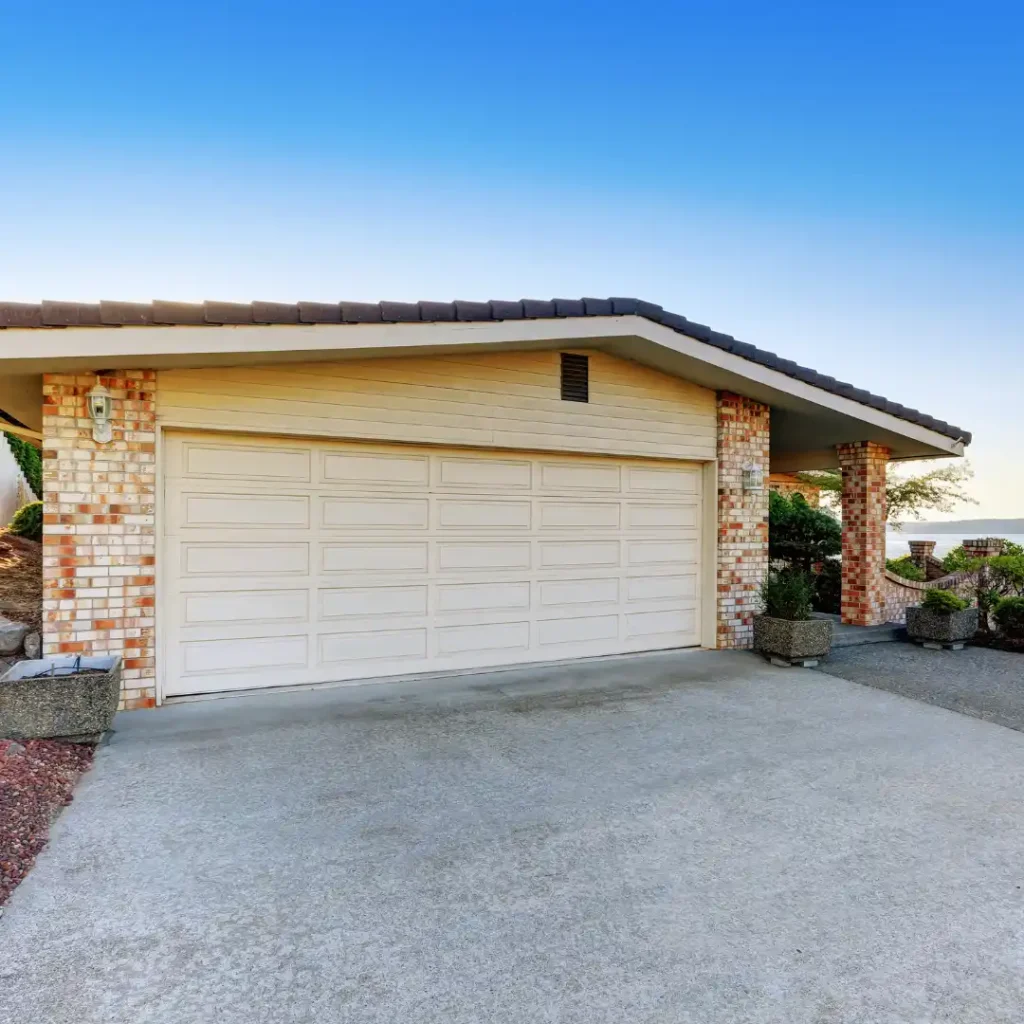
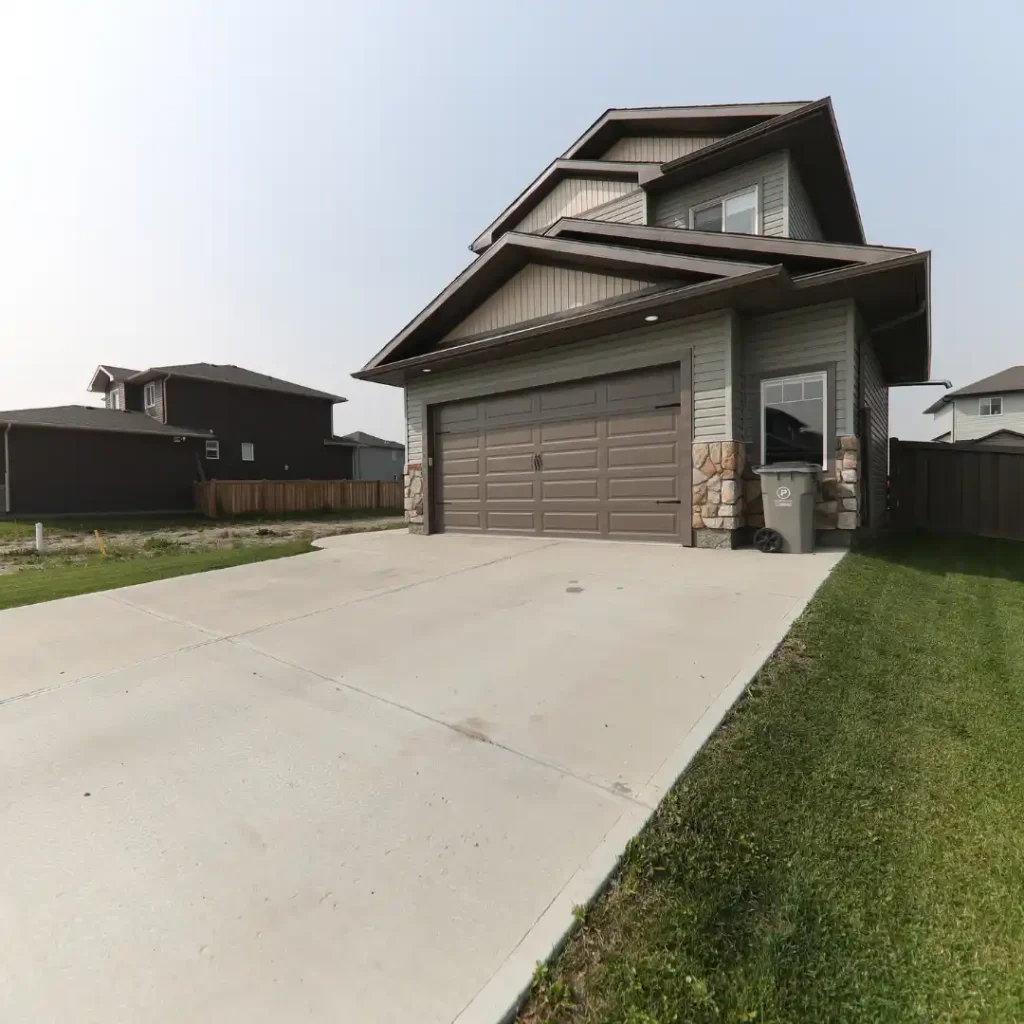
Maintaining Your Resurfaced Driveway
To get the best out of your new surface:
Sweep regularly to remove debris.
Wash with a hose or pressure washer to keep it clean.
Avoid harsh chemicals that may damage the sealer.
Reseal every 2–3 years to maintain protection.
Get Your Brisbane Driveway Resurfacing Quote Today
If your driveway has lost its original look or feels unsafe to walk or drive on, resurfacing is a fast, cost-effective way to restore it. Our team can assess your concrete, recommend the best resurfacing option, and provide a competitive quote tailored to your needs.
Contact Brisbane Concretes today to arrange a site visit and take the first step toward a beautiful, long-lasting driveway.
Understanding the Brisbane Driveway Resurfacing Process in Detail
A successful driveway resurfacing project in Brisbane starts with a solid understanding of each stage in the process. When you know how it works, you can better maintain the surface, choose the right finish, and ensure the results last.
Step-by-Step Guide:
Inspection and Assessment – Before any resurfacing begins, the condition of the existing concrete is thoroughly checked. This helps identify cracks, chips, oil stains, or areas where the surface has eroded.
Surface Preparation – The driveway is pressure cleaned to remove dirt, grease, moss, and loose concrete. In some cases, mechanical grinding or acid etching is performed to create a strong bonding surface.
Concrete Repairs – Cracks, pitting, or holes are repaired using high-quality patching compounds designed to blend with the existing concrete. This step ensures the surface is level and stable before resurfacing begins.
Application of Overlay or Coating – Depending on the chosen finish (stencil, stamped, exposed aggregate, or smooth), a new concrete layer or decorative coating is applied. This layer bonds directly to the prepared base and restores the driveway’s appearance and durability.
Texturing and Finishing – If you’ve chosen a patterned or slip-resistant finish, this is where texture and design are added.
Sealing the Surface – A concrete sealer is applied to protect against stains, UV rays, moisture damage, and abrasion. Sealing is critical for keeping the resurfaced driveway looking fresh for years.
Knowing this process allows homeowners to make informed decisions about materials, patterns, and maintenance schedules for their concrete driveway resurfacing.
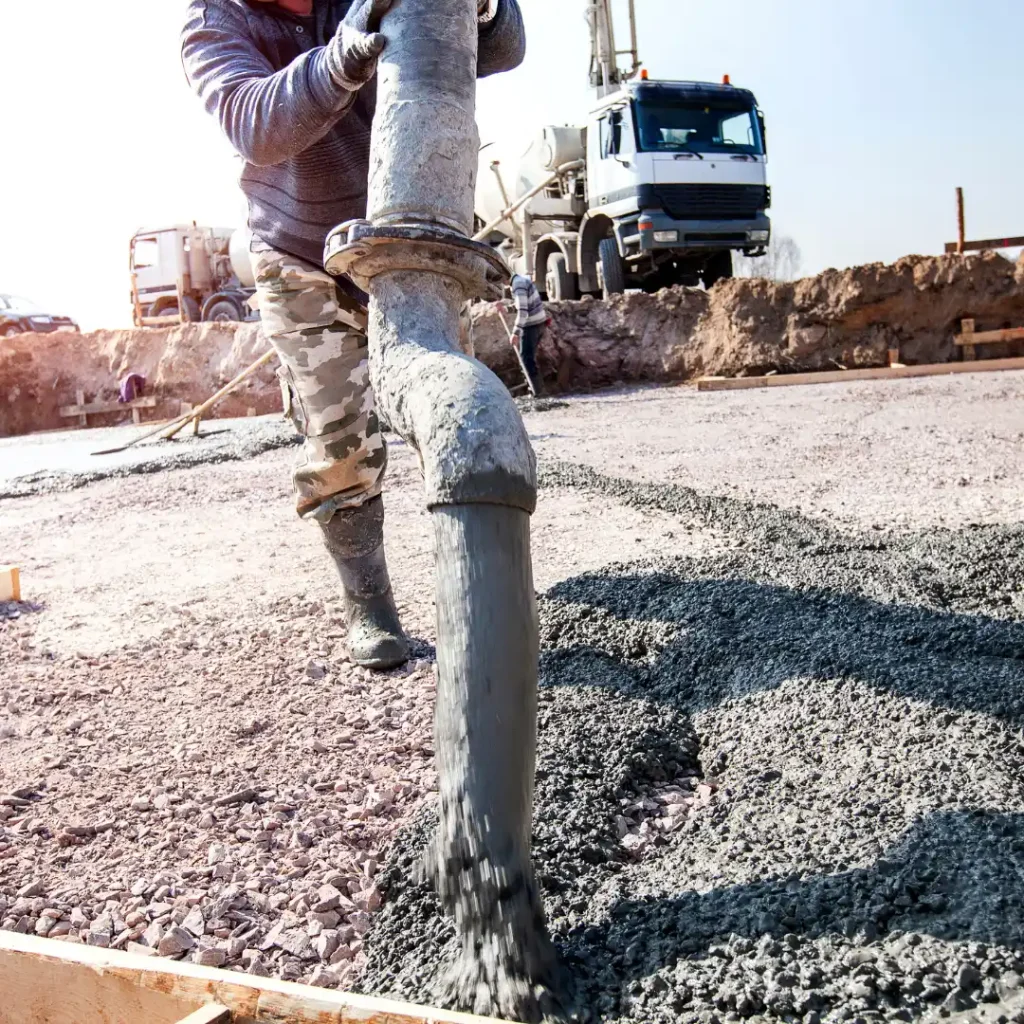
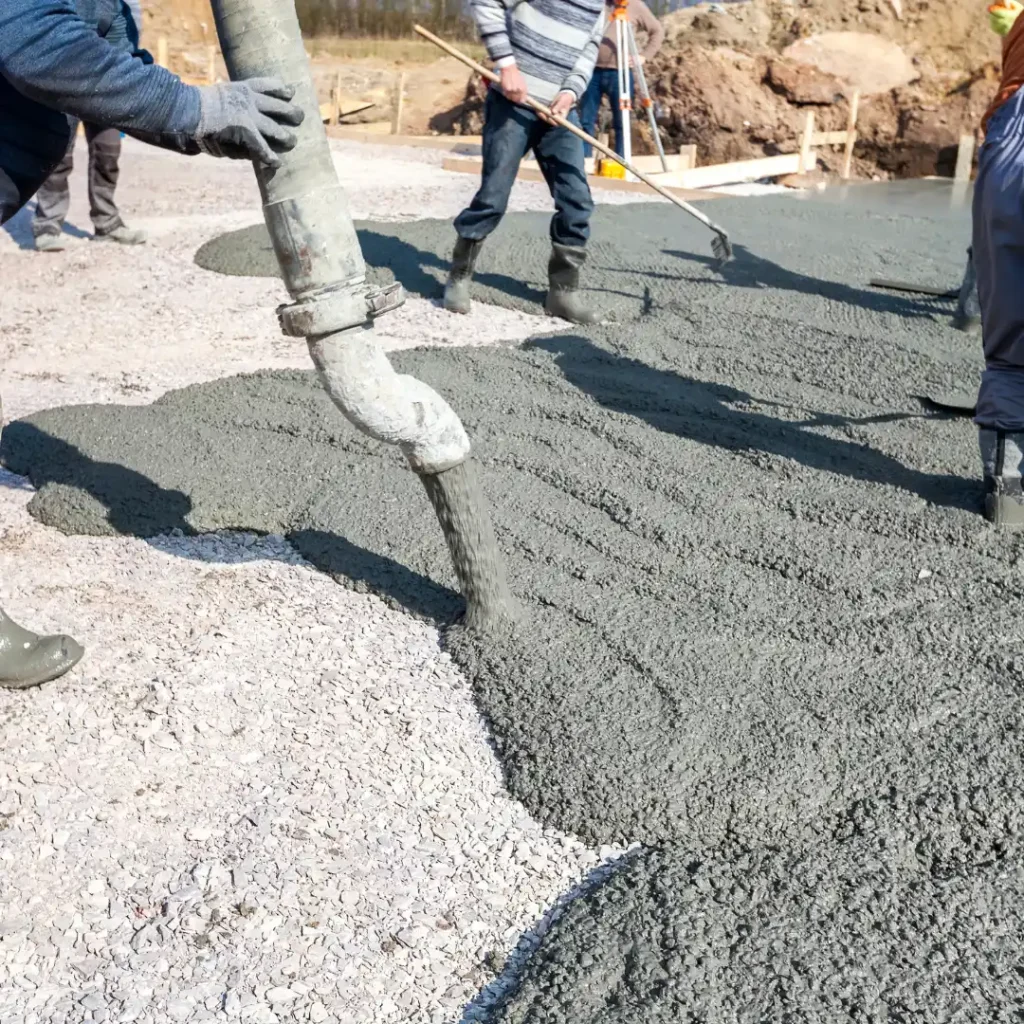
The Most Common Driveway Problems Resurfacing Can Solve
Driveways in Brisbane face unique challenges due to weather patterns, heavy vehicle use, and environmental conditions. Driveway resurfacing can address many of these issues without the need for costly replacement.
Key Problems Resurfacing Fixes:
Surface Cracks – Small to medium cracks are filled and covered with a new surface layer, stopping water from penetrating and causing further damage.
Fading and Discolouration – UV rays can bleach concrete over time, making it look patchy and worn. A resurfacing overlay restores colour and offers UV protection.
Pitting and Surface Erosion – Years of wear and exposure can cause small holes and a rough texture. Resurfacing fills these imperfections for a smoother look.
Oil and Rust Stains – Stubborn stains can be permanently hidden beneath a fresh coating, giving the driveway a clean slate.
Outdated Appearance – A plain grey slab can be transformed into a decorative feature using stencilling, stamping, or exposed aggregate resurfacing.
Slight Unevenness – Minor dips or high spots can be corrected during resurfacing, improving water drainage and safety.
By addressing these issues early, concrete driveway resurfacing Brisbane can significantly extend the life of your driveway while improving its appearance.
Comparing Driveway Resurfacing to Replacement
When deciding between driveway resurfacing and full driveway replacement, it’s important to weigh the pros and cons of each.
Driveway Resurfacing
Pros:
Lower cost compared to replacement.
Shorter installation time (often just 2–3 days).
Ability to customise finishes, colours, and patterns.
Environmentally friendly — reuses existing concrete base.
Cons:
Only works if the base is structurally sound.
Doesn’t correct deep structural damage.
Driveway Replacement
Pros:
Suitable for severely damaged or unstable bases.
Opportunity to redesign driveway shape or size.
Cons:
Higher cost and longer installation time.
More disruption to your property during works.
When Resurfacing Wins:
If your driveway has cosmetic flaws, light cracks, or surface wear but no major structural issues, concrete driveway resurfacing Brisbane is the faster, more cost-effective option. Replacement is only needed if the base has serious damage or has shifted significantly.
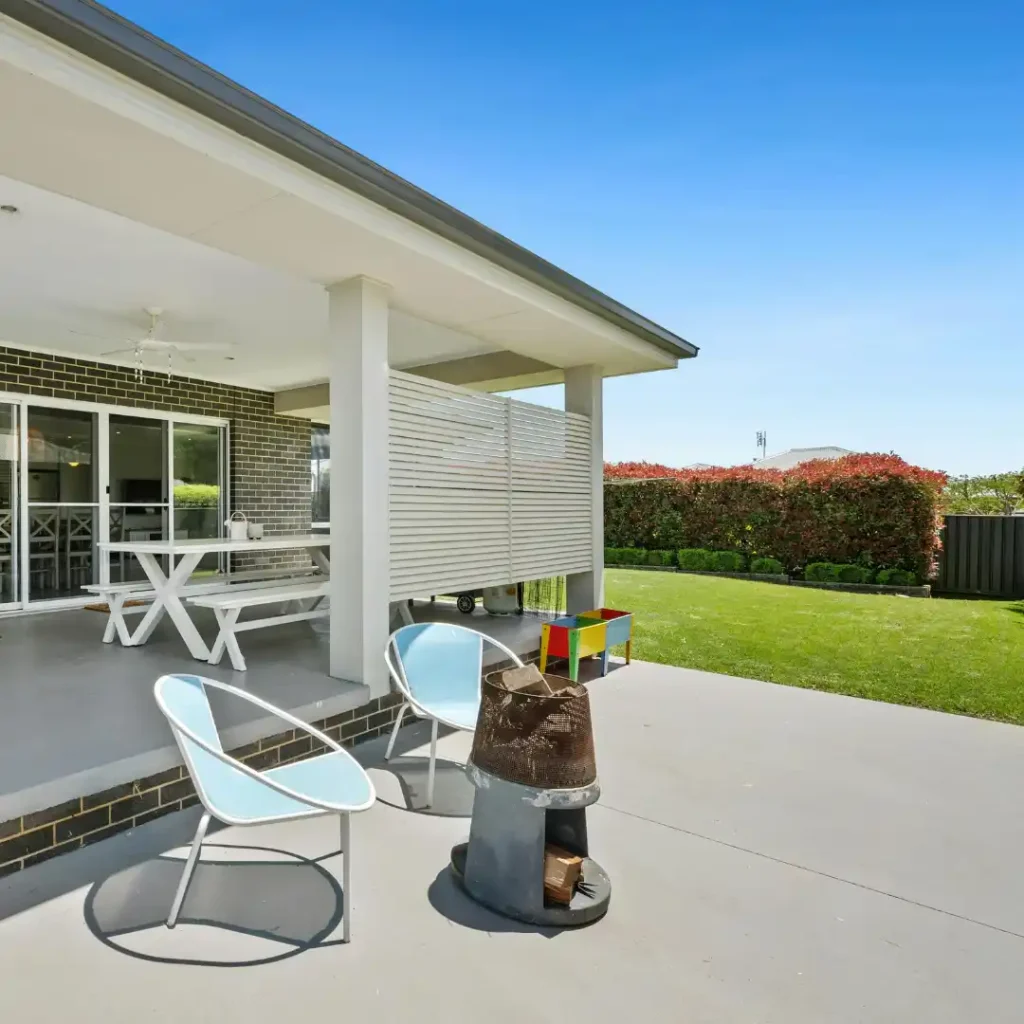

Choosing the Right Finish for Your Resurfaced Driveway
One of the advantages of resurfacing is the wide range of decorative and functional finishes available. Each finish offers different benefits for Brisbane driveway resurfacing:
Stencil Concrete Driveway – Mimics the look of bricks, tiles, or pavers while providing the strength of a single slab. Popular for its versatility in patterns and colours.
Stamped Concrete Driveway – Creates a textured surface resembling stone, slate, or timber. Offers a high-end aesthetic with minimal maintenance.
Exposed Aggregate Driveway – Combines durability with decorative appeal by revealing small stones in the surface. Highly slip-resistant and great for sloped driveways.
Smooth or Coloured Concrete – Offers a sleek, contemporary look that suits modern homes and commercial properties.
Slip-Resistant Coatings – Ideal for areas prone to moisture or where safety is a priority.
When selecting a finish, consider factors such as your home’s exterior design, the slope and size of your driveway, and the level of maintenance you’re willing to commit to.
Long-Term Care Tips for a Resurfaced Concrete Driveway
Once your driveway has been resurfaced, proper care will help maintain its appearance and structural integrity for years.
Maintenance Guidelines:
Regular Cleaning – Sweep away leaves, dirt, and debris to prevent surface staining.
Pressure Washing – Use a low-to-medium pressure washer every few months to keep the driveway looking fresh.
Prompt Spill Cleanup – Clean oil, petrol, and other spills quickly to avoid permanent stains.
Avoid Harsh Chemicals – Acidic or solvent-based cleaners can damage sealers and coatings.
Resealing Every 2–3 Years – A fresh coat of sealer protects against UV damage, stains, and wear from vehicle tyres.
Control Heavy Loads – Avoid parking extremely heavy vehicles in the same spot for extended periods to reduce stress on the surface.
With these steps, Brisbane driveway resurfacing can remain in top condition for over a decade, preserving both visual appeal and functionality.
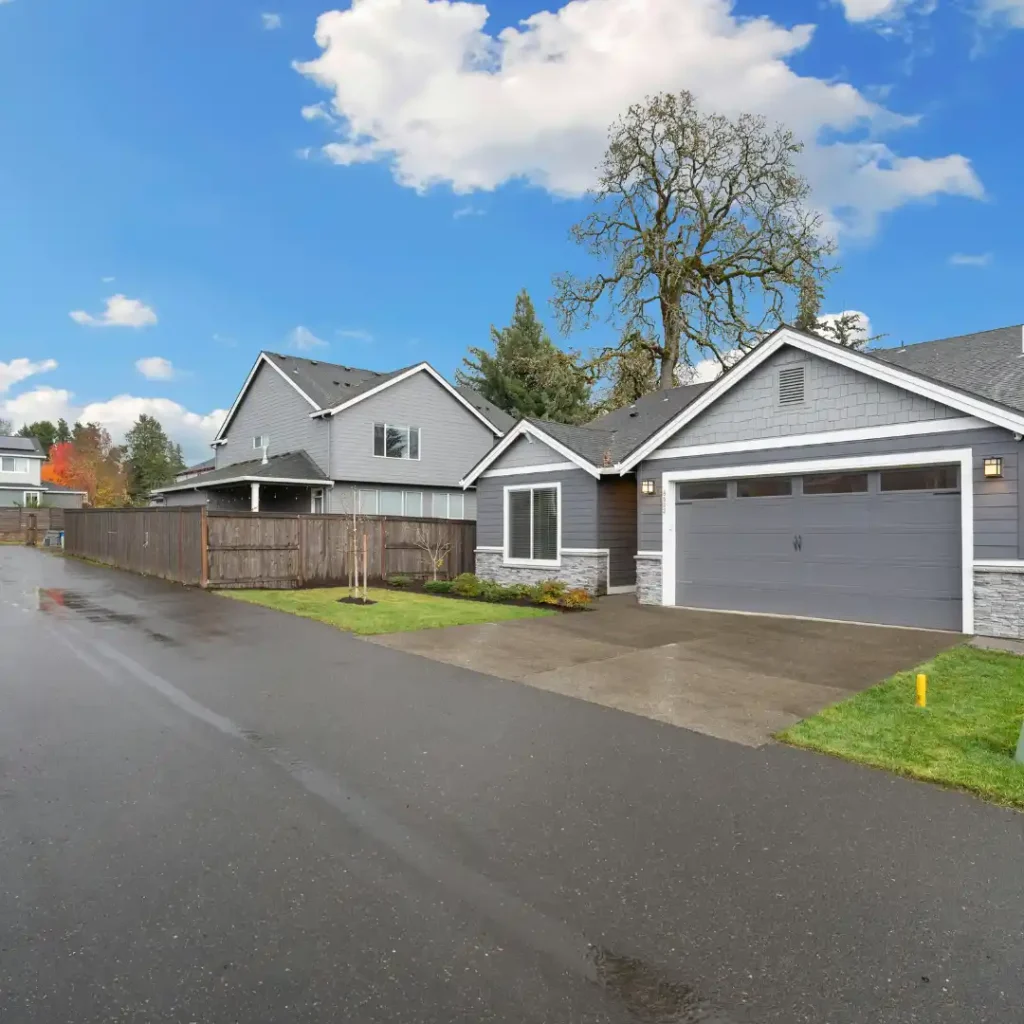
Frequently Asked Questions (FAQs)
A concrete contractor handles everything from site preparation and formwork to pouring, finishing, curing, sealing, and repairs. Common services include concrete driveways, exposed aggregate, stamped concrete patios, house & shed slabs, footpaths, retaining wall footings, driveway resurfacing, and ongoing concrete repair and sealing.
Concrete driveway cost depends on size, finish (plain, exposed aggregate, stamped), site access, base preparation, reinforcement, and drainage. Rather than guess a price, request a site visit or detailed online quote — contractors will give accurate estimates based on these factors.
Exposed aggregate reveals durable pea gravel or stone in the surface for a textured, slip-resistant finish. It’s low maintenance, long-lasting, ideal for Brisbane’s climate, and a popular choice for driveways, paths, and pool surrounds.
A well-installed concrete driveway typically lasts 20–30+ years with proper base prep, reinforcement, sealing, and routine maintenance. Lifespan varies by traffic, soil conditions, drainage, and maintenance.
New concrete generally reaches light-vehicle strength after ~7 days but achieves near-full strength at 28 days. Timing varies with mix, weather, and curing methods — your concrete contractor will provide site-specific guidance.
Stamped concrete is imprinted with patterns (stone, pavers, brick) and can be coloured for decorative patios or driveways. Exposed aggregate exposes natural stone for texture and grip. Choose stamped for decorative looks and exposed aggregate for durability and slip resistance.
Yes — common services include crack repair, patching, overlay/resurfacing, levelling, and resealing. Driveway resurfacing and overlays can restore appearance and function without a full replacement in many cases.
Cracks often come from shrinkage, poor base compaction, inadequate reinforcement, heavy loads, or poor curing. Prevention includes proper site prep, control joints, steel mesh/rebar, correct concrete mix, and careful curing practices.
Sealing protects against stains, weathering, and moisture penetration — important for exposed aggregate, stamped finishes, and driveways. Reseal every 2–3 years for high-traffic areas; frequency depends on finish and exposure.
Key cost drivers: driveway area, chosen finish (plain vs stamped vs exposed aggregate), excavation need, access difficulties, reinforcement, drainage solutions, and any council permit/crossover requirements.
Yes — experienced contractors can match colours and textures using coloured mixes, stains, stamping patterns, or surface treatments like polishing and overlays. Provide photos and samples for best results.
Often a driveway crossover or changes to kerb access require a council permit. Check Brisbane City Council rules before starting — your concrete contractor in Brisbane can usually advise on permit requirements and standard dimensions.
Provide: driveway/patio dimensions, desired finish (exposed aggregate, stamped, plain), photos of the site, information about access and existing surfaces, and any council constraints. Most contractors offer free site inspections or fast online quotes based on detailed info.
